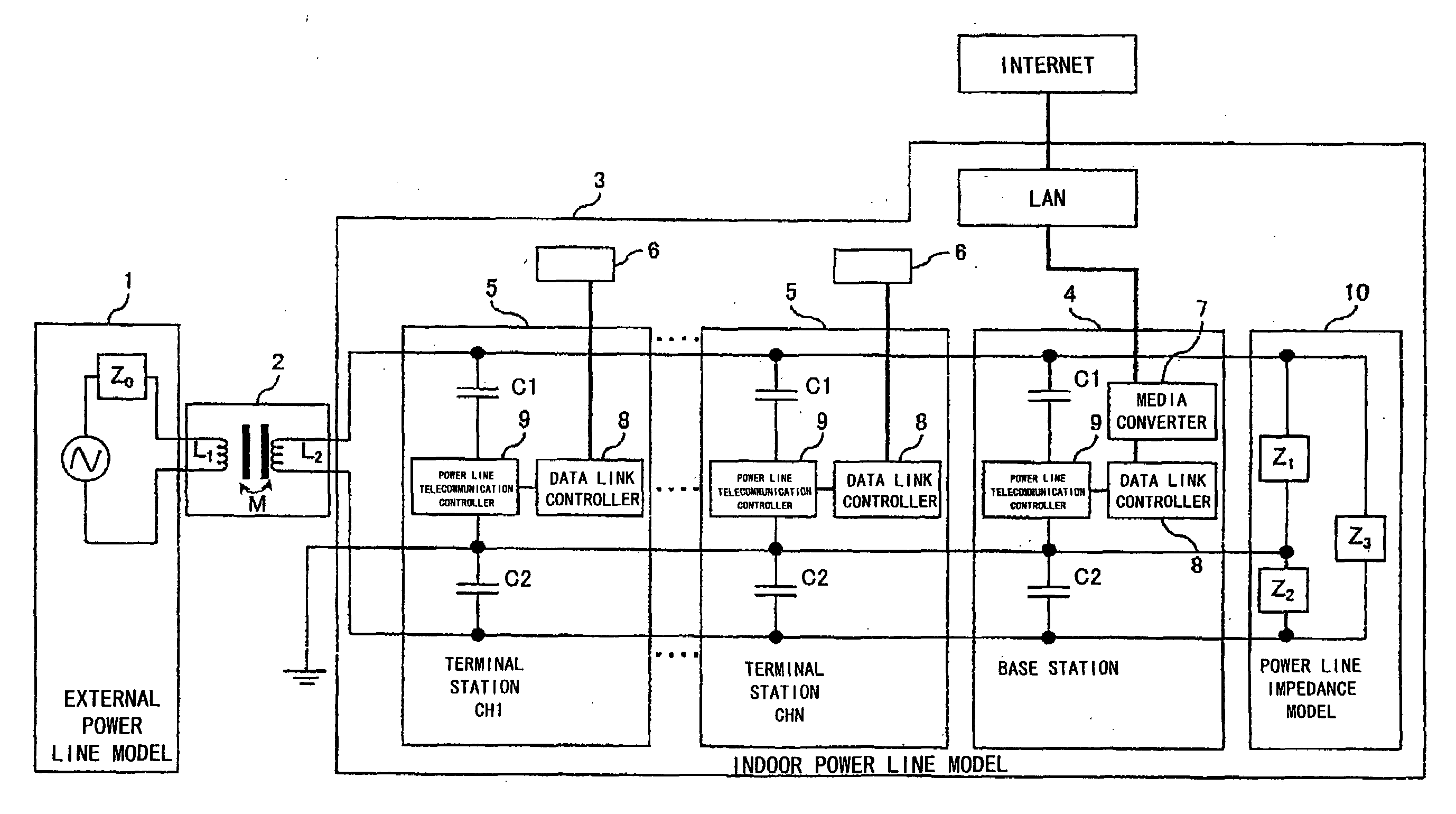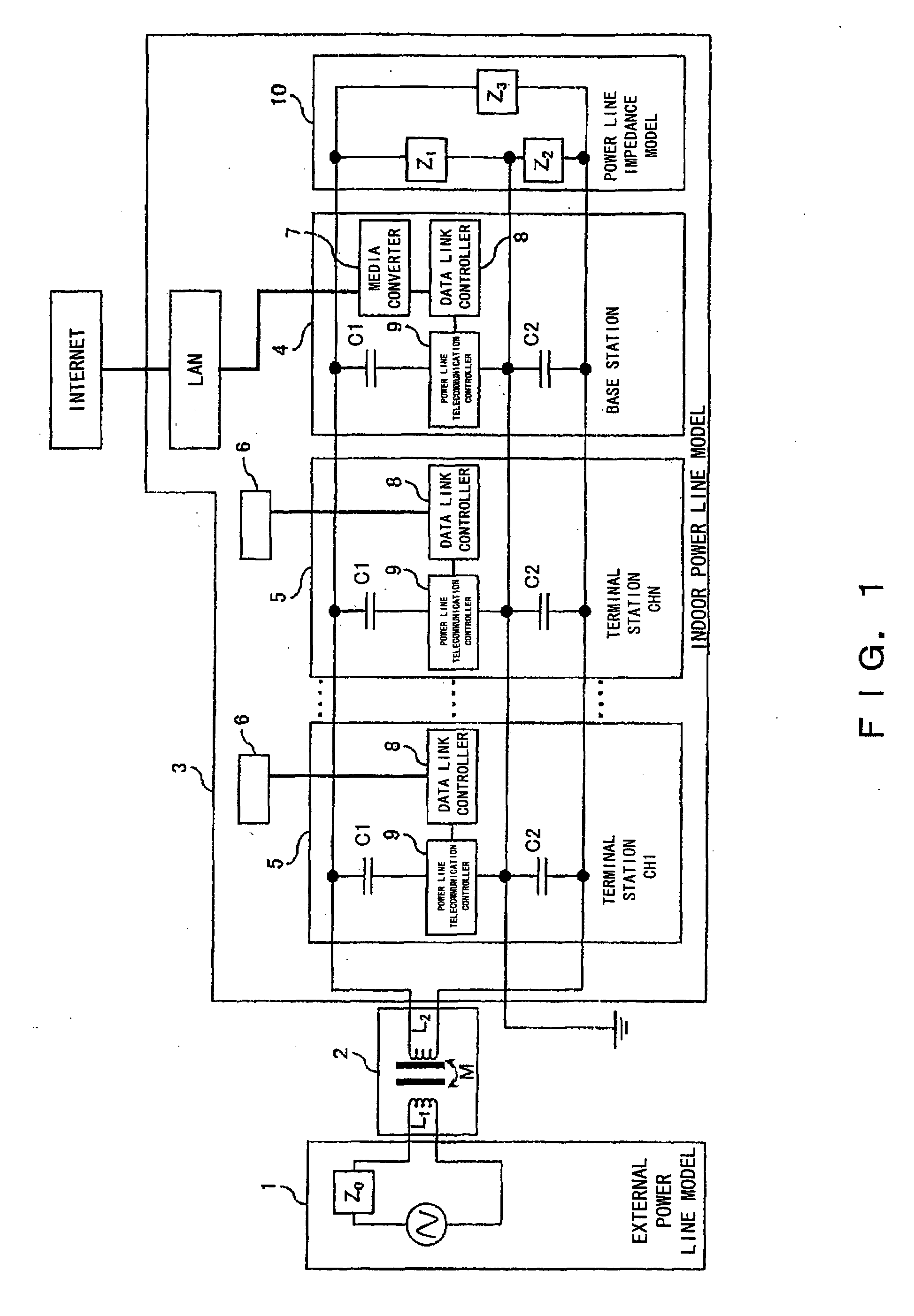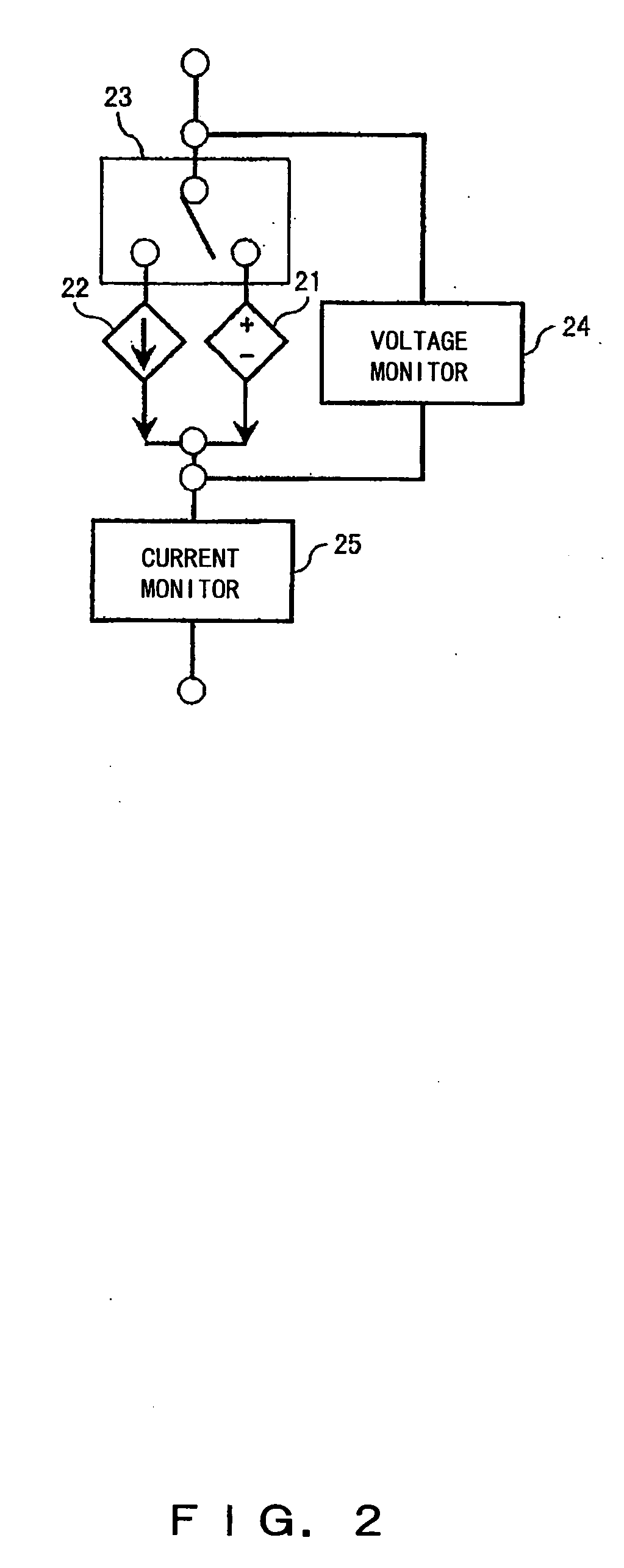Multiple access apparatus and method using power line
a multi-access apparatus and power line technology, applied in the field of signal superimposed, can solve the problems of limited time division telecommunication methods, limited telecommunication methods, and inability to enable simultaneous access, so as to increase telecommunication transmission capacity, and ensure the effect of security
- Summary
- Abstract
- Description
- Claims
- Application Information
AI Technical Summary
Benefits of technology
Problems solved by technology
Method used
Image
Examples
embodiment 1
[0247]FIG. 13 exemplifies a connection between a transmission unit and a reception unit by one circuit in a model for simulating a code division multiple access (CDMA) for accomplishing a digital signal process (DSP). In an actual line, not only a power line but also any line has a resident noise component, influencing a telecommunication.
[0248]However, it is a model validating by a simulation that a use of the CDMA system becomes hardly influenced by a noise component.
[0249]FIG. 14 is a diagram showing an internal model of a code division multiplex (CDMA) transmission unit, indicating an internal configuration of a TXCODE 131 shown in FIG. 13. The CH1 through CH4 shown in FIG. 14 respectively generate CDMA signals, receive synchronous signals input from in1 through in4, adjust gains, et cetera, of the generated signal and transmit from individual outputs CH1 (−1), CH1 (1), CH2 (−1), CH2 (1), CH3 (−1), CH3 (1), CH4 (−1) and CH4 (1), respectively. Triangles shown by the numerical 141...
embodiment 2
[0255]FIG. 17 is a model equipping a power line model in a CDMA model line shown in FIG. 12. And the present model is an original type model of a same clock time code division multiple telecommunication enabling an uplink connection to a base station from a terminal station connecting to an individual service outlet also considering an influence of a distribution constant of a power line to a power line impedance environment and a current signal superimposing-type code division multiple telecommunication (access) simulation.
[0256]An AC power supply 1 is connected to the primary side of a step-down transformer 170 of the present model for supplying a power signal (e.g., 100 volts, 50 Hz or 60 Hz, et cetera).
[0257]A terminal station in the present model is constituted by model DIPs 176a through 176d (i.e., a dependent current source) for superimposing a signal transmitted from each channel of a TXCODE 175 on a current signal of the power line, a monitor signal conversion block 177a th...
embodiment 3
[0263]FIG. 19 is a power line impedance environment and a current signal superimposing-type code division multiple telecommunication (access) simulation, which is a downlink connection from a base station to an individual terminal station (the present embodiment does not consider a distribution constant-wise influence of a power line; while a synchronous signal uses a simplified model).
[0264]Likewise at the time of an uplink, a connection of an AC power source on the primary side of a step-down transformer 170 of the present model supplies a power signal (e.g., 100 volts, 50 Hz or 60 Hz, et cetera). A terminal station in the present model is constituted by a model DVP 191 (i.e., a dependent voltage source) for superimposing a signal transmitted from each channel from a TXCODE 199 on a voltage signal of the power line, by a voltage monitor signal conversion block 192, by a current monitor signal conversion block 193 and by a capacitor 194; and a transmission signal is transmitted fro...
PUM
 Login to View More
Login to View More Abstract
Description
Claims
Application Information
 Login to View More
Login to View More - R&D
- Intellectual Property
- Life Sciences
- Materials
- Tech Scout
- Unparalleled Data Quality
- Higher Quality Content
- 60% Fewer Hallucinations
Browse by: Latest US Patents, China's latest patents, Technical Efficacy Thesaurus, Application Domain, Technology Topic, Popular Technical Reports.
© 2025 PatSnap. All rights reserved.Legal|Privacy policy|Modern Slavery Act Transparency Statement|Sitemap|About US| Contact US: help@patsnap.com



